Faux locs hairstyle is a trendy and protective style that mimics the look of dreadlocks. With its versatility and low maintenance, faux locs have become a popular choice for individuals who want to experiment with a unique and stylish look without committing to permanent dreads.
They can be created using synthetic or human hair, and offer endless possibilities for customization, from length and thickness to color and texture. Faux locs can be installed using various methods, such as wrapping, braiding, or crocheting hair extensions into natural hair.
This hairstyle is perfect for those who want to add some flair to their appearance while keeping their hair protected and healthy.
Faux Locs – A Stylish Alternative to Natural Dreadlocks
Faux Locs, also referred to as fake locs or temporary locs, are a popular hairstyle that mimics the look of natural dreadlocks. Unlike traditional dreadlocks that require significant time and commitment to form, Faux Locs involve the use of hair extensions to achieve a similar style.
This protective hairstyle has gained popularity over the years as a versatile and fashionable choice, allowing individuals to experiment with the dreadlock aesthetic without a long-term commitment.
The Technique of Faux Locs
Faux Locs are created by applying either synthetic or human hair extensions to the natural hair.
These extensions are carefully braided or twisted into the individual’s hair, imitating the appearance of traditional dreadlocks.
This technique provides the flexibility to choose different hair textures, lengths, and colors, making it a versatile choice for those looking to change their hairstyle without permanently altering their natural hair.
Origins and Evolution of Faux Locs
Faux Locs originated in the 1990s within the African-American community as a protective hairstyle. It was conceived as an alternative to the time-consuming process of growing and maintaining natural dreadlocks.
This innovation allowed individuals to experiment with the dreadlock look, catering to a wide range of style preferences.
Over time, Faux Locs have transcended cultural boundaries and are now embraced by people of various ethnic backgrounds as a fashionable and adaptable hairstyle choice.
Why Choose Faux Locs Hairstyle
Versatility and Diversity
One of the primary reasons for the growing popularity of Faux Locs is their versatility and diversity. Whether you prefer long or short, thick or thin Locs, there’s a Faux Locs style to cater to everyone’s preferences. This wide range of options makes it accessible and appealing to a broad audience.
Low Maintenance
Faux Locs are celebrated for their low maintenance nature. Unlike traditional Locs that often require regular retwisting and upkeep, Faux Locs can be installed and left alone for weeks or even months. This reduced maintenance burden makes them a convenient choice for individuals with busy lifestyles.
Protective Nature
Another significant benefit of Faux Locs is their protective nature. They act as a shield for your natural hair, safeguarding it from harsh environmental elements. This protection allows your hair to grow and rest without the risk of damage, promoting healthier hair in the long run.
Unique and Stylish Appearance
In addition to their practical advantages, Faux Locs also offer a distinctive and fashionable look. With a variety of available colors, lengths, and textures, you can experiment with different styles to express your individuality and personal taste. This uniqueness adds to their appeal as a trendy hairstyle choice.
Preparing for and Installing Faux Locs
Preparing Your Natural Hair
Before getting started with Faux Locs, it’s crucial to prepare your natural hair properly. Begin by ensuring your hair is clean and free from any product build-up. A clarifying shampoo can effectively remove any residue. Deep conditioning is also essential to maintain moisture and overall hair health.
Choosing the Right Extensions
When selecting Faux Locs extensions, you have different options to consider. Synthetic hair extensions are affordable and come in various colors and styles. Alternatively, human hair extensions offer a more natural look. Pay attention to the length and thickness of the extensions to achieve your desired result.
Necessary Tools and Materials
Before installation, gather the necessary tools and materials, including a crochet hook, hair clips, rubber bands, and edge control gel or wax. The crochet hook attaches extensions to your natural hair, while hair clips help with sectioning. Rubber bands secure the extensions, and edge control products help lay down your edges for a neat finish.
Installation Process
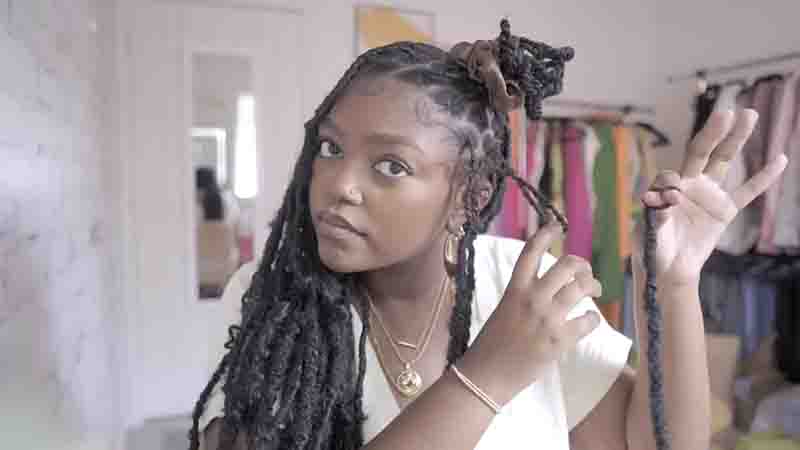
To install Faux Locs, you’ll need to section and part your hair carefully, ensuring a natural and uniform appearance. The size of the sections depends on your desired loc thickness. Methods like crochet or braids can be used to create the locs, offering flexibility and style options. Taking your time and installing each loc carefully is essential for a seamless look. A latch hook or crochet needle can be used to loop your hair through the loc for security.
Maintenance and Care
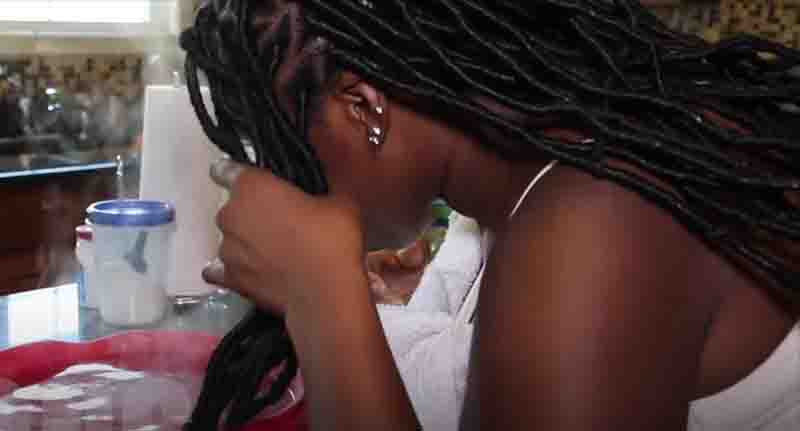
Proper care is essential to keep your Faux Locs looking fresh. Start by cleaning and washing them correctly. Mix a gentle shampoo with water and spray it onto your scalp, massaging gently. Avoid twisting or tugging the locs while rinsing. Moisturizing is equally important to prevent dryness. Apply a leave-in conditioner or moisturizing spray regularly. To prevent damage, avoid excessive manipulation and use a wide-tooth comb or fingers to detangle. Wearing a silk or satin scarf at night can protect your locs and maintain their shape.
How Many Packs of Hair are Typically Needed for Different Faux Locs Styles
The number of hair packs typically needed for different faux locs styles varies depending on the length and thickness desired. Introducing a stylish and versatile protective hairstyle, faux locs offer a range of options to suit your preference.
Whether you opt for the shorter bob-style locs or the longer and fuller bohemian locs, the number of hair packs required will differ. For shorter styles, such as shoulder-length or bob-style faux locs, approximately 5 to 7 packs of hair are usually sufficient.
However, for longer and thicker styles like bohemian or goddess locs, it is recommended to have around 9 to 12 packs of hair available. Understanding the right amount of hair packs needed for your desired faux locs style ensures a flawless and stunning result.
Determining the Number of Hair Packs for Different Faux Locs Styles
Faux Locs Basics
Faux locs offer a versatile and stylish protective hairstyle. The number of hair packs needed varies based on the length and thickness of the locs desired.
Short Faux Locs
For shorter styles like bob-style locs, around 5 to 7 packs are usually sufficient. Factors like thickness and density of your natural hair also affect the quantity needed.
Medium-Sized Faux Locs
The length and thickness of medium-sized locs influence the number of hair packs required. Consulting a stylist can provide accurate estimates based on your preferences.
Long Faux Locs
Longer locs generally require more packs of hair, with thickness and size of individual locs playing a role in determining the amount needed.
Thin Faux Locs
The number of packs for thin locs depends on factors like length, thickness, and hair density. Professional guidance is recommended for accurate estimates.
Thick Faux Locs
Thicker locs typically need around 6 to 8 packs, but individual factors like natural hair thickness and desired length should be considered.
Crochet Faux Locs
Factors such as length, thickness, hair density, and the quality of hair packs affect the number needed. Consult with a stylist for precise estimates.
Goddess Faux Locs
Hair length, thickness, density, and head size are crucial factors in estimating the number of hair packs needed for this style.
Distressed Faux Locs
The length, thickness, size of locs, desired density, and personal preference all impact the quantity of hair packs required.
How Long Can Faux Locs Typically Last
Faux locs typically last for several weeks to a few months. They provide a temporary option for those who want a protective hairstyle.
Faux locs are a temporary protective hairstyle that can last several weeks to a few months, but various factors influence their lifespan.
The durability of faux locs can vary based on hair type and texture. Coarser and thicker hair tends to make locs last longer, while fine and silky hair may lead to a shorter lifespan.
On average, faux locs typically last around 6 to 8 weeks, but this can vary based on maintenance and hair growth rate.
Styling Versatility with Faux Locs
Versatile Styling Options
Faux Locs offer a multitude of styling possibilities, making them a popular choice for those seeking a trendy and versatile look. Whether you’re aiming for a playful and creative appearance or a more refined style, Faux Locs can be effortlessly adapted to match your preferences.
Enhancing with Accessories and Beads
To elevate your Faux Locs, consider incorporating accessories and beads. These additions allow you to experiment with various colors and designs, resulting in a distinctive and personalized style. Whether you favor subtle embellishments or bold statement pieces, beads and accessories can elevate the overall aesthetic of your Faux Locs.
Adaptability for Different Occasions
Another advantage of Faux Locs is their adaptability for different occasions. Whether you’re heading to a casual outing or attending a formal event, this hairstyle can be easily tailored to suit any setting. Opt for an elegant high bun or ponytail for a polished look, or leave your Faux Locs loose for a relaxed and bohemian vibe. The versatility of Faux Locs empowers you to express your individuality and align your style with the specific event.
Why Might Faux Locs Cause Discomfort, And How Can It Be Avoided
Faux locs, a popular and stylish hairstyle, can sometimes lead to discomfort. This discomfort often arises from factors related to the tightness and weight of the locs. In this section, we will delve into the reasons behind this discomfort and explore how to avoid it.
Tightness and Weight: Common Causes of Discomfort
- Tight Installation: When faux locs are installed too tightly, they exert excessive tension on the scalp, potentially causing discomfort, pain, and even hair breakage.
- Heavy Extensions: The weight of extensions used in faux locs can strain the scalp, leading to soreness and discomfort.
Preventing Discomfort: Tips for a Comfortable Faux Locs Experience
- Choosing Appropriate Loc Size: Opt for loc sizes that match your hair type and length to ensure they are not too heavy or tight.
- Lightweight Extensions: Using lightweight extensions reduces the strain on your scalp, minimizing discomfort during wear.
- Quality Matters: High-quality synthetic or natural hair materials are less likely to cause irritation or discomfort.
- Proper Installation: Skilled stylists who follow recommended techniques ensure that locs are installed without excessive tension on the scalp.
- Tension Reduction: Avoid hairstyles that pull tightly on the scalp and refrain from using heavy accessories that add unnecessary weight.
- Scalp Hygiene: Regular cleaning and moisturizing of the scalp prevent discomfort from dirt, oil buildup, or dryness.
Minimizing Discomfort During Wear
- Scalp Moisturization: Regularly hydrate your scalp with lightweight oils or a hydrating spray to prevent dryness.
- Gentle Handling: Avoid constant manipulation or tugging on the locs to reduce discomfort.
- Protective Measures While Sleeping: Use a satin or silk scarf or pillowcase to protect locs from friction and tangling during sleep.
- Routine Cleaning and Conditioning: Maintain loc health by using clarifying shampoo to remove buildup and moisturizing conditioner to keep them soft and supple.
How Do Faux Locs Differ from Traditional Locs
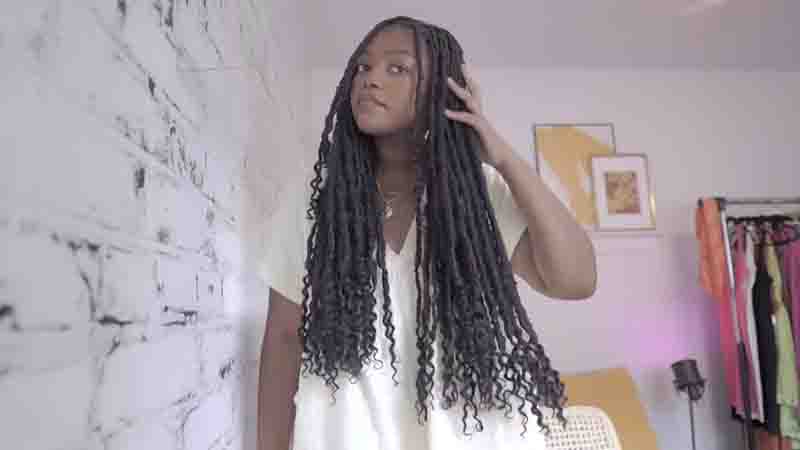
Faux locs and traditional locs are two popular hairstyles that have their own unique characteristics. Understanding the key differences between these two styles can help you choose the one that suits your preferences and needs.
Traditional locs hold profound cultural significance and serve as a popular hairstyle choice for many individuals. These natural, coiled strands create a distinctive and fashionable appearance.
Understanding traditional locs is vital for those contemplating this style. One critical aspect to consider is their cultural importance. Traditional locs have deep roots in African and Caribbean communities, often symbolizing identity, spirituality, and pride.
| Characteristics | Faux Locs | Traditional Locs |
|---|---|---|
| Technique and process involved | Faux locs are created by wrapping synthetic hair around your natural hair, which can be time-consuming. | Traditional locs are formed by allowing your natural hair to mat and tangle over time. |
| Looks and aesthetics | Faux locs offer a wide range of styles, textures, and colors, providing a versatile and customizable look. | Traditional locs have a more natural and organic appearance, reflecting the unique texture and growth pattern of your hair. |
| Durability and lifespan | Faux locs typically last around 6-8 weeks, depending on how well you care for them. | Traditional locs are a long-term commitment and can last for many years with proper maintenance. |
| Styling versatility and options | Faux locs can be styled in various ways and can even be adorned with accessories, providing endless options for creativity. | Traditional locs offer limited styling options, but they can be accessorized with beads, wraps, or other embellishments. |
| Cost considerations | Faux locs are generally more affordable than traditional locs, as they require less time and expertise to install. | Traditional locs can be more expensive due to the time and skill required to create and maintain them. |
Considering these differences, you can now make an informed decision on whether faux locs or traditional locs are the right choice for you.
What are Some Popular Faux Locs Styles to Consider
Bohemian Goddess Locs
Bohemian Goddess Locs are a popular faux locs style that exudes a bohemian and goddess-like vibe. These locs are known for their definition and unique characteristics. Achieving Bohemian Goddess Locs involves a combination of braiding and wrapping your natural hair with extensions, resulting in a textured and voluminous look. Many celebrities have embraced this style, showcasing their versatility and beauty.
Mermaid Locs
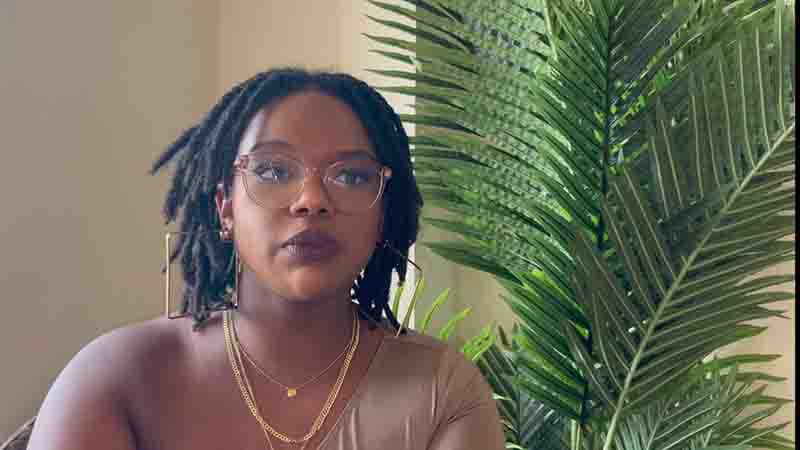
Faux locs have become increasingly popular as a stylish and versatile protective hairstyle. One of the most sought-after faux locs styles is the enchanting Mermaid Locs. These locs allow you to embody the whimsical beauty of a mermaid, adding a touch of fantasy to your look.
Mermaid Locs are defined by their long and flowing appearance, resembling the ethereal strands of a mermaid’s hair. They are typically created using synthetic hair extensions that are twisted or braided to imitate the texture and appearance of real locs. One of the key characteristics of Mermaid Locs is their length, which often reaches down to the waist or even beyond.
If you’re eager to achieve this mesmerizing style, there are a few methods you can consider. You can opt for the traditional method, which involves installing the locs individually, or you can choose a quicker alternative like the crochet method. Both techniques yield stunning results, allowing you to flaunt your Mermaid Locs with confidence.
Many celebrities have embraced the allure of Mermaid Locs and rocked them on various occasions. Stars like Beyoncé, Zendaya, and Rihanna have all sported this style, showcasing its versatility and unique appeal. By opting for Mermaid Locs, you can channel your inner mermaid and unleash your glamorous side.
Distressed Locs
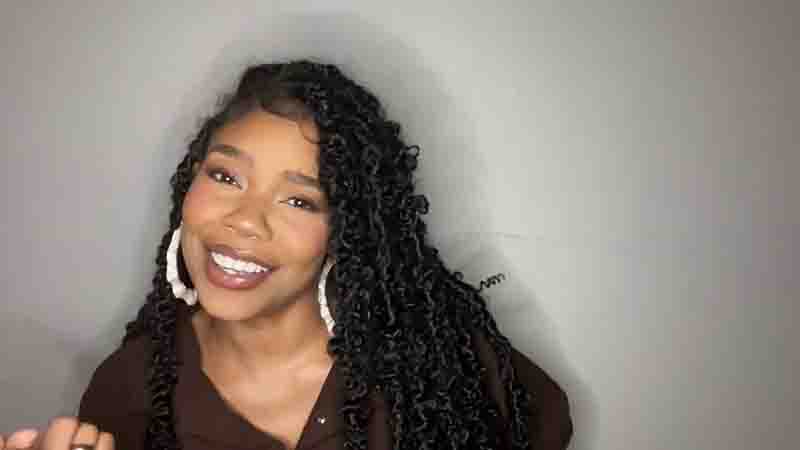
Distressed locs are a trendy faux locs style known for their rugged and edgy appearance.
These locs are designed to mimic the appearance of mature, naturally grown locs.
Distressed locs have gained popularity among those seeking a unique and bold hairstyle choice.
This style is characterized by a slightly messy and disheveled look, featuring locs that appear frayed or unraveling at the ends.
Achieving distressed locs involves a combination of techniques, including backcombing, crocheting, and unraveling the locs.
Many celebrities, such as Zendaya, Rihanna, and Meagan Good, have been seen rocking the distressed locs style, adding to its popularity.
Distressed locs offer a versatile and low-maintenance option, allowing for various styling options, from updos to half-up, half-down styles, enabling individuals to express their creativity while maintaining a chic and fashionable look.
Classic Faux Locs
Classic faux locs are a popular hairstyle that mimic the look of traditional dreadlocks without the commitment. They are created by wrapping synthetic hair around individual sections of your natural hair using a crochet method. Here’s an overview of classic faux locs:
| How to achieve classic faux locs hairstyle | Pros and cons of classic faux locs | Maintenance and care tips for classic faux locs |
|---|---|---|
| – Start with clean, dry hair – Section your hair and attach the synthetic hair using a crochet hook – Twist the hair to create the locs – Seal the ends to prevent unraveling | – Versatile and customizable – Low maintenance – Temporary and can be easily removed – Protect your natural hair | – Keep your scalp moisturized – Avoid excessive washing – Sleep with a satin scarf or pillowcase – Avoid heavy product buildup |
With classic faux locs, you can achieve a trendy and stylish look without the commitment of traditional locs. Whether you want to experiment with a new hairstyle or protect your natural hair, classic faux locs are a versatile option to consider.
Goddess Faux Locs
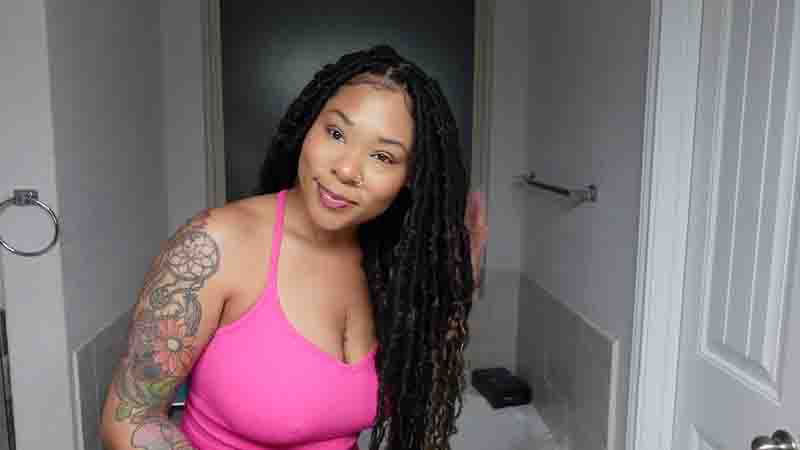
Goddess faux locs have gained popularity for their fusion of bohemian locs and goddess braids. Unlike traditional faux locs, this style combines intricate braiding with loc extensions. Explore what sets goddess faux locs apart.
Discover the process of creating goddess faux locs. It involves a meticulous approach where individual sections of natural hair are braided before being wrapped with kinky hair extensions. Learn how this technique yields a fuller and more intricate appearance reminiscent of authentic locs.
Explore the lifespan of goddess faux locs with proper care. While they require patience during installation, these locs can last for weeks when well-maintained. Learn maintenance tips, including moisturizing the scalp, avoiding excessive manipulation, and scheduling touch-ups to combat frizz.
Unlock the styling potential of goddess faux locs. From updos to half-up hairstyles, these locs offer diverse styling options. Discover how you can reinvent your look with different styles while maintaining the allure of your goddess faux locs.
Understand why goddess faux locs are celebrated for their natural and low-maintenance appeal. These locs allow individuals to embrace their natural hair while infusing a touch of bohemian elegance into their overall look.
Crochet Faux Locs
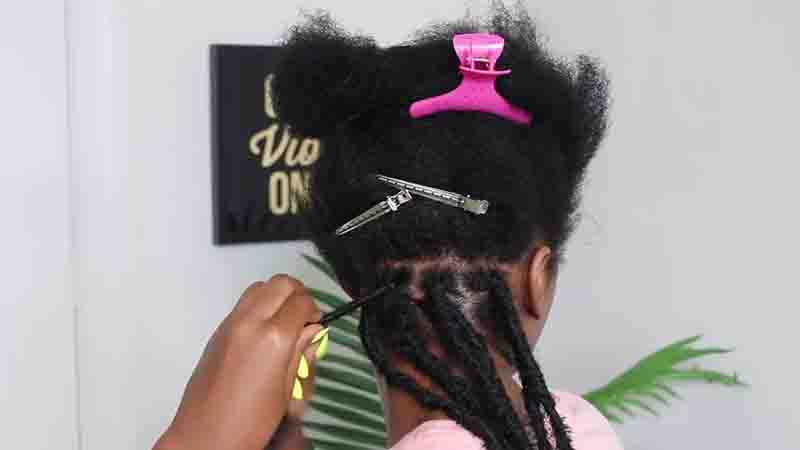
The crochet faux locs style is a popular choice among those looking for a low-maintenance and versatile hairstyle. Unlike other faux locs styles, crochet faux locs are installed using a crochet hook, making the process quicker and easier.
Crochet faux locs offer a natural and realistic look, resembling traditional locs. They can be styled in various ways, from updos to braids, and are available in different lengths and thicknesses to suit individual preferences.
To install crochet faux locs, you will need crochet hair extensions and a crochet hook. The process involves braiding the natural hair, then crocheting the extensions onto the braids. This method allows for easy installation and removal, minimizing damage to the hair.
Some popular hairstyles with crochet faux locs include half-up half-down styles, ponytails, and buns. The versatility of this style allows for experimentation and creativity.
Maintaining crochet faux locs is essential to prolong their lifespan. Regularly moisturize the scalp and hair, and avoid excessive manipulation to prevent frizzing. Covering the hair at night with a satin scarf or bonnet can help preserve the style.
Havana Twists
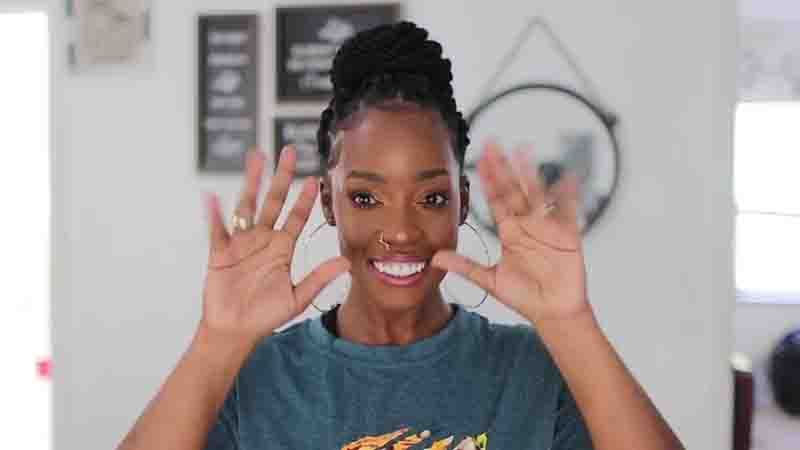
When it comes to faux locs, Havana twists are a popular choice. These stylish and versatile twists offer a unique look that sets them apart from other faux locs styles. With their chunky and textured appearance, Havana twists stand out as a statement hairstyle.
Installing Havana twists is a fairly straightforward process. These twists are created using Havana hair extensions, which are thicker and have a looser curl pattern compared to other types of hair used for faux locs. The hair extensions are attached to your natural hair using a crochet method, resulting in beautiful, long-lasting twists.
Havana twists offer a variety of styling options. You can wear them up in a high ponytail, style them into a chic updo, or let them hang loose for a carefree look. The versatility of Havana twists allows you to get creative with your hairstyles and change up your look whenever you want.
FAQ
Faux locs made with synthetic hair can repel water to an extent, but they’re not entirely waterproof. However, getting them wet in the rain or during regular activities generally shouldn’t cause damage as long as they’re dried thoroughly afterward.
You can style faux locs in various ways, including buns, ponytails, half-up styles, and braids. Accessories like beads, scarves, and headbands can also enhance the styling options.
There are various methods to achieve faux locs, including wrapping, braiding, and crocheting the synthetic hair or extensions around your natural hair. Some popular methods are wrapping with Marley or Kanekalon hair, goddess faux locs, and butterfly locs.
Faux locs continue to be a popular and stylish protective hairstyle due to their versatility, low maintenance, and ability to mimic the look of real locs.
When showering with faux locs, it’s important to protect them from excess water exposure. You can use a shower cap or wrap your locs in a plastic bag to prevent them from getting excessively wet. Afterward, ensure they’re properly dried.
To wear a scarf with faux locs, you can tie it around your head, covering the edges of your faux locs or fashion it into a headband style to accessorize your look.
Most synthetic hair used for faux locs cannot withstand heat styling tools. However, if you have specialized synthetic hair designed for heat, it might be possible to curl them using low heat.
To create a bun with faux locs, gather the locs into a ponytail, twist or wrap them around the base, and secure with bobby pins or a hair tie. You can leave some loose for a messy or casual bun or wrap them tightly for a neater look.
Faux locs are typically created using extensions. The extensions are used to give length and volume, as they are wrapped or braided around your natural hair to form the locs.
The tightness of faux locs depends on the installation method and the stylist. They shouldn’t be excessively tight as this can cause discomfort and potential damage to your natural hair and scalp.
For individuals with short hair, extensions are added to create length before forming the locs. The hair is then braided or twisted into small sections, and the extensions are wrapped or crocheted around these sections to create the locs.
Disadvantages of artificial dreadlocks (faux locs) may include the potential for scalp irritation, discomfort if installed too tightly, and the weight of the added hair causing tension or strain on the natural hair and scalp.
Faux locs can be kept in for about 2 to 3 months with proper care and maintenance. However, it’s essential to monitor your natural hair’s health and the condition of the locs to prevent damage.
The cost of getting faux locs can vary based on factors like location, the stylist’s expertise, the length and thickness of the locs, and the type of extensions used. Generally, it can range from $100 to $300 or more.
Faux locs do add some weight to your hair due to the additional synthetic or natural hair used to create the locs. The weight can vary depending on the number and thickness of the locs.
Faux locs are a broad term for artificial locs created using extensions, while butterfly locs are a specific type of faux locs characterized by a wavy or curly pattern, resembling butterfly wings when installed.
The number of faux dreads needed depends on the desired thickness and volume, as well as your natural hair’s density. Generally, it could range from 50 to 100 or more individual locs for a full head.
Conclusion
When it comes to popular faux locs styles, the options are endless. From goddess locs to bohemian locs, there’s a style to suit everyone’s taste. These versatile and low-maintenance hairstyles have gained popularity for their natural look and effortless charm.
Whether you’re looking to switch up your look or protect your natural hair, faux locs are definitely worth considering. So, go ahead and explore the different styles and unleash your inner goddess with these trendy locs!

